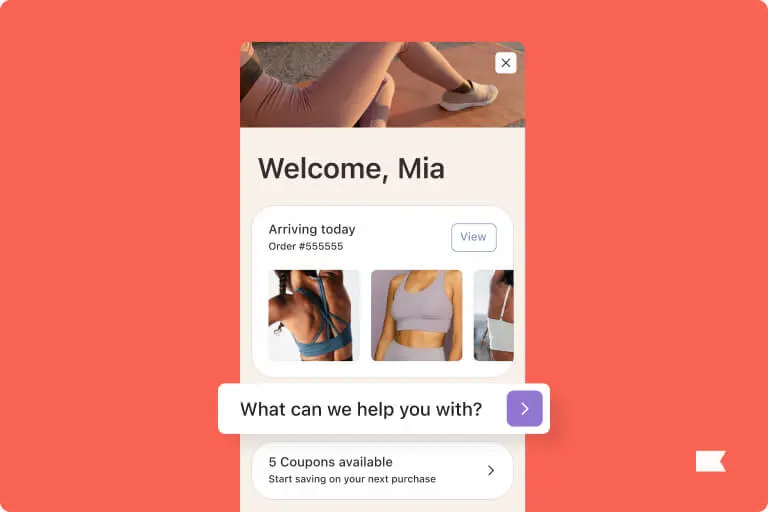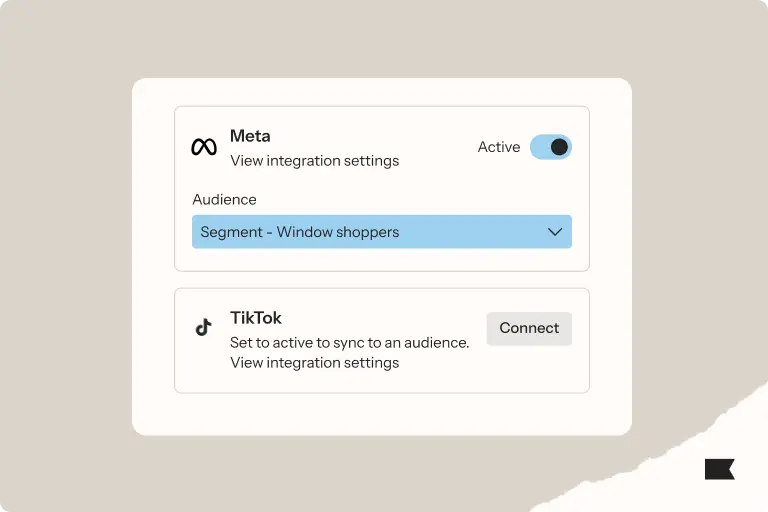
Top-performing brands segment their lists. Their tactics are becoming more sophisticated

List segmentation used to be a novel concept.
This was especially before brands could collect and centralize data about their subscribers.
Now, segmentation is an owned marketing best practice—and to stay competitive, brands need to get more creative with how they use it.
Innovations in segmentation are allowing that creativity to flourish. Top-performing brands are now slicing and sending to their lists with:
- Behavioral data: online interactions between your subscribers and your brand, the data points of which all collected in a single place, providing you a complete, consolidated view of your customer. Behavioral data can trigger in Klaviyo from actions on your website, or from integrations.
- Dynamic segments: segments that populate automatically based on a set of criteria
- Predictive analytics: insights based on anonymized data from thousands of customers
Here, we highlight 3 success stories from Klaviyo customers who are using savvy segmentation strategies to boost sales.
1. Jenni Kayne segments smarter and grows total email revenue 14.5%
The team at Jenni Kayne didn’t think sending 3 emails per day fit their luxury apparel and home brand—even though that’s what they were doing.
“I’ve always advocated for less email,” says Melissa Smith, director of retention. “It doesn’t feel like a luxury experience to be getting 3 emails a day.”
But to make sure they didn’t lose revenue, the team needed to figure out how to send smarter—not less. Here’s how they began that journey:
- Sending interest-based campaigns: People interested in apparel get different emails than those interested in home goods. The brand uses purchase and browsing history to sort people into the correct segment, and they ask people to self-select on their sign-up forms.
- Inviting customers to meet in person: Jenni Kayne encourages in-person shopping by strategically sending online shoppers discount codes redeemable only in stores. And if a customer near a store abandons a $5K+ cart, the local store manager gets a notification to reach out to that person.
These efforts helped drive a 14.5% increase in email revenue YoY.
More purchase history segment-based tactics worth trying
Similar to reserving abandoned cart discounts only for high-value carts, you can segment your customers by LTV and only offer discounts to people likely to spend a lot.
Win-back emails are especially effective when combined with predictive analytics, like churn risk prediction that comes out-of-the-box on Klaviyo.
If your products are seasonal, one way to keep unsubscribe rates low during your off season is to send only to your most loyal customers at that time (Bearpaw does this with great success).
2. Huda Beauty doubles Klaviyo-attributed revenue YoY with “simple segmentation”
The team at Huda Beauty was struggling with email deliverability, and seeing a YoY decline in overall performance. They knew they needed a fresh strategy to turn things around—and as part of their revival, they overhauled their list segmentation.
The brand created a send schedule based on engagement—meaning their most recently engaged segment would get the most frequent messages, while less recent engagers started receiving fewer emails.
“With simple Klaviyo segmentation, we were able to clean up a lot of the deliverability issues that we had previously,” says Phuong Ngo, Huda Beauty’s CRM and loyalty manager. “It was something small that created a really big lift.”
The brand was then able to complement their campaigns with relationship-building automations, like category-specific post-purchase flows for lips, skin, and skincare products. These flows thank customers for buying, then recommend application techniques and complementary products.
In addition to more helpful messaging—“we’re making sure that customers are getting the information they need,” Ngo says—these efforts helped the brand double their YoY Klaviyo-attributed revenue.
More “simple segmentations” you don’t want to miss
These are your most high-intent subscribers. Treat them differently from your 120- and 180-day engaged profiles. Learn how to build engaged profile segments.
For your browse abandonment flow, segment based on the last product someone viewed on your website to keep your content fresh and relevant for each recipient.
Segment your SMS subscriber list similarly to your email list. Build out 30-, 60-, and 90- engaged profile segments for SMS, and build specific messages for those audiences. Your 30-day engaged SMS segment is your most loyal, for instance, so send these folks your time-sensitive, urgent messages that inspire immediate action.
3. Compass Coffee triples media-based reviews by personalizing incentives
Segmentation no doubt leads to more sales, but it can also help strengthen the other support pillars of a healthy ecommerce business.
Compass Coffee, for example, launched the online subscription side of their business in 2020 to weather COVID, and they wanted to keep growing it. To do that successfully, they needed more high-quality customer reviews.
Specifically, Compass wanted their reviews to include a picture of “your coffee in your kitchen,” as CMO Joel Shetterly puts it. But how could they incentivize photo submissions?
This is when they got creative with their customer review software, Klaviyo Reviews, using a “review has media” event to separate reviewers who uploaded a photo with their review from those who didn’t.
Now, if a review has a photo, the reviewer gets a 15% discount on their next order; if it doesn’t, they simply get a thank-you email and a reminder to leave a photo next time. This strategy contributed to a 3.7x QoQ jump in customer photos and a 70.5% jump in total reviews in Q1 2023.
More ways to segment customer review messages
Send a personal SMS message from your founder asking for feedback. Trigger this message for SMS subscribers whose post-purchase delivery messages have gone out—and who don’t have open support tickets.
Encourage user-generated content by offering to promote a customer’s profile on your account in exchange for a review.
Before the launch of a new product, announce it to a shortlist of your most loyal customers in exchange for an honest review.
Learn how to use AI to improve and speed up segmentation
Most brands are swimming in data. The problem isn’t that they’re short on it—it’s that they aren’t using it to its fullest potential.
As brands gather more data about their customers, more segments become possible. But unless you have a team dedicated to data analytics, you may miss those patterns because you lack the resources required to activate your data—and take full advantage of all possible subscriber and customer segments.
This is what Klaviyo AI can solve for your brand. Here are two ways we help:
- Predictive analytics: Forecast your customer’s next move and send the exact right message at the right time.
- Segments AI: All you have to do is type a description of the people you want to reach, and boom. Klaviyo creates the segment for you.
Related content
- Why smarter digital relationships begin with segmentation
- Email segmentation tools have evolved—and you should use them to do the same
- 6 effective email marketing strategy examples from real-life brands

Related content

Discover how ecommerce personalisation enhances customer experiences and boosts revenue with real examples and proven strategies.

Discover how one brand used Klaviyo’s Meta integration to build high-intent audiences, lower CPA, and drive 2x conversions through smarter ad targeting.

Learn how to use Klaviyo’s advanced CDP to drive more revenue this BFCM—from real-time personalization and enriched profiles to warehouse syncs, alerts, and custom segmentation.